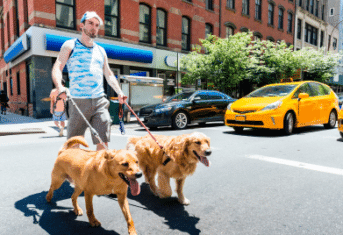Canine Flu: An Update

Canine Flu: An Update
For the last few months, veterinarians and dog owners in the Chicago area and other Midwestern states have been faced with an outbreak of canine influenza. Over 1,100 dogs have been diagnosed with the virus and sadly, some have died. First identified in an outbreak of what was believed to be “kennel cough” in greyhounds, the canine influenza virus was initially described in 2005. Canine influenza virus is just one of the causes of “kennel cough” which is really a general term for canine upper respiratory tract infections. The canine influenza virus reported in 2005 is an H3N8 strain of the virus which has been documented nationwide. The current Chicago outbreak is caused by an H3N2 virus, which is the virus circulating in Asian dogs. Exactly how the Asian strain came to the Windy City is not currently known. Canine influenza seems to be moving east and cases have now been confirmed in the state of Indiana. Just yesterday, dog flu was diagnosed in Iowa.
Dog to Dog Transmission
Canine flu is transmitted from dog to dog and dogs can transmit it prior to showing symptoms of the virus. That feature of the disease is probably responsible for its rapid transmission within a population. Inanimate objects, leashes, collars, bowls and bedding used by an infected dog could be a source of infection for other dogs coming in contact with those objects. Petting a sick dog and then petting a healthy dog can also spread the infection.
Clinical Signs of Canine Influenza
The clinical signs of canine influenza run the gamut of respiratory disease. Twenty percent of dogs infected with the virus will never show any signs, but still can infect other dogs. Most dogs develop what we might think of as a cold– sneezing, runny nose and a cough. Dogs with the flu feel out of sorts with a fever and a poor appetite. About ten percent of infected dogs will develop a serious complication of influenza – bacterial pneumonia.
What precautions should dog owners take?
- Avoid doggie day care, the boarding kennel, the dog park, obedience classes and any other areas where dogs congregate. The canine flu spreads most rapidly in situations where many dogs come in contact with each other or with infected dogs’ coughs and sneezes.
- Wash your hands well. The canine influenza virus can live on human hands for 12 hours, unless they are washed with soap and water.
- Talk to your veterinarian about the canine influenza vaccine. The available vaccine is for the typical H3N8 virus. Because the virus in this outbreak is H3N2, we don't know if the flu vaccine will protect dogs against this new virus, but it is being recommended in the Chicago area. The canine flu vaccine is like the human flu vaccine; it lessens signs of flu and shortens their duration, but does not prevent the disease.
- If your dog contracts the flu, wash bedding, dishes, leashes and clothing which can transmit the virus for up to 24-48 hours after coming in contact with a sick dog.
- Keep your cat away from your sick dog since the H3N2 strain can be transmitted to cats. The H3N8 strain is not believed to infect cats.

































